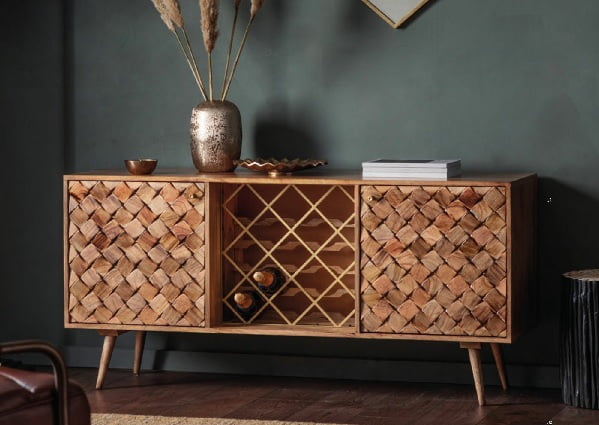
Suitable for small pieces of furniture such as side table, coffee table, stands, accent furniture. One of the cheapest options to make a piece of furniture in solid wood
The furniture manufacturing sector has frequently lagged far behind in offering sustainable alternatives, frequently prioritising fashion over sustainability. This is why we were intrigued when we first learned about mango wood.
Mango furniture, unlike typical hardwood furniture, is more reasonably priced and, as we’ll discuss, entirely sustainable. It can withstand ageing just as well as your grandmother’s oak kitchen table. Mango farms can be found all over the world, including in Australia, Mexico, Brazil, Southeast Asia, Mexico, and Mexico. Mango wood is the ideal substitute for conventional furniture materials like oak and maple. Mango is technically a hardwood with strong grains, giving it the strength to support chairs and heavy tables while being soft enough to be relatively easy to work with and not require special tools from the producers.
Could mango wood displace its less sustainable rivals by being robust, adaptable, and beautiful?
Unprocessed mango wood has an outer surface or sapwood that is dark brown. The inner surface or the heartwood is relatively paler in colour. Meanwhile, the processed mango wood has a rough and light brown appearance.

Aesthetics and Durability
Mango wood that has not been processed has dark brown sapwood on the exterior. The heartwood’s inner surface is significantly lighter in colour. The treated mango wood, on the other hand, appears rough and light brown, with uneven lines and dark patches. The so-called wood grain is made up of these lines and blotches. Its grain is excellent but uncommon. It is classified as fairly perishable wood as a result. If the grain is wild or interlaced, the wood may tear out during machining. While you are sawing wood, it may also move. Its high silica content can make your cutting instruments’ edges brittle.
